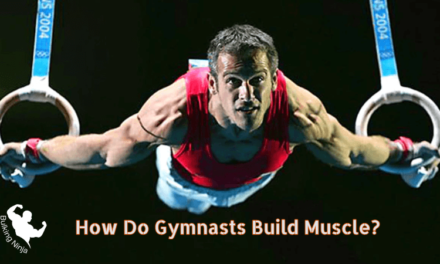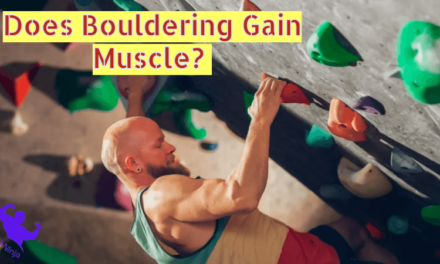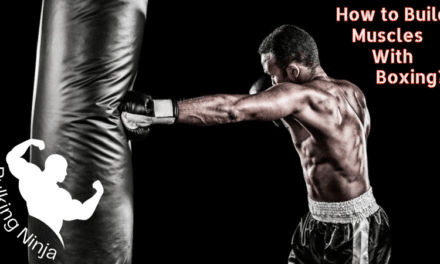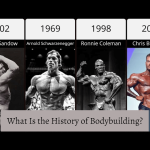Diving into the world of fitness often leads us to explore various exercise options to achieve our muscle-building goals. Among these options, swimming emerges as a unique contender. Beyond its reputation as a full-body cardiovascular workout, questions arise about its potential to foster muscle growth. Read more about Best sports for building muscles.
Can the serene waters of a pool truly contribute to the sculpting of lean muscle mass? In this blog post, we’ll delve into the science behind swimming as a muscle-building exercise, exploring its benefits, challenges, and how it fits into a holistic fitness regimen. Whether you’re a dedicated swimmer or simply curious about the possibilities, let’s unravel the question: Can you grow muscle by swimming?
Table of Contents
- Can You Grow Muscle By Swimming?
- Swimming for Muscle Growth
- Do Different Strokes Target Different Muscles?
- What Amount of Swimming is required for Muscle Building?
- What are the Benefits of Swimming?
- Frequently Asked Question
- Can you build muscle just from swimming?
- How much do you have to swim to build muscle?
- Does swimming build muscle faster?
- Can swimming replace gym?
- Is swimming better than weightlifting?
- Should I swim first or gym first?
- How many hours should I swim a day?
- Is swimming the best way to get fit?
- Does swimming build muscle or burn fat?
- Is swimming good for muscle recovery?
- Swimming workout for muscle gain?
- Does swimming build chest muscle?
- What muscles does swimming not work?
- Does swimming burn fat?
- Best swimming stroke to build muscle?
- Conclusion
Can You Grow Muscle By Swimming?
Swimming, often regarded as a recreational activity, holds the potential to go beyond cardiovascular fitness. Engaging in swimming involves various strokes, each targeting distinct muscle groups. The resistance provided by the water during swimming acts as a form of resistance training, stimulating muscle contractions and adaptations. The rhythmic and controlled movements required to propel oneself through the water contribute to building muscle strength and endurance over time. This low-impact exercise not only builds muscle but also offers a range of positive adaptations within the body.
When it comes to muscle growth, the intensity and consistency of training play a vital role. While swimming may not result in bodybuilder-level gains, it offers a unique pathway to muscular development. Understanding different muscle fiber types is crucial; certain strokes emphasize endurance, while others focus on power. Consulting with a physiotherapist or fitness professional can guide individuals in tailoring their swimming routines to target specific muscle groups and achieve desired results.
Although swimming alone can help build lean muscle, combining it with other forms of resistance exercises can enhance the overall impact. Incorporating resistance exercises, such as weightlifting or bodyweight exercises , can address the desire for ‘ripped’ or bigger muscles. These exercises provide a higher degree of resistance and target specific muscle groups in a way that complements the benefits of swimming. The body’s adaptive nature responds positively to a diversified training regimen, leading to more pronounced gains in strength and muscle definition.
In essence, swimming stands as a valuable addition to a fitness routine for those seeking an alternative means of muscle growth and maintenance. Its unique combination of cardiovascular exercise, resistance training, and adaptability makes it a comprehensive option. By intelligently integrating swimming, understanding muscle fiber types, and adjusting the intensity, individuals can harness the water’s resistance to propel themselves towards a stronger, fitter physique. Let’s Start Your Bulking Journey with Breakfast is important for Muscle Building.
Swimming for Muscle Growth
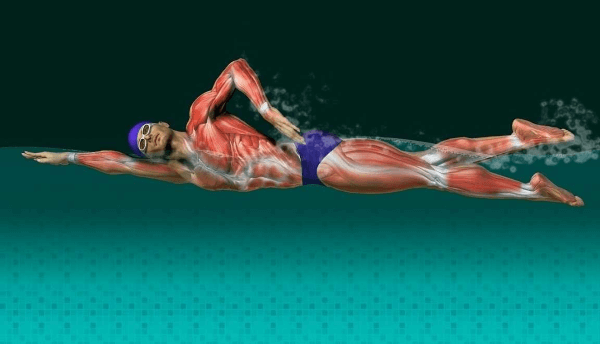
Swimming, an activity often associated with leisure, holds untapped potential for muscle growth. Through a combination of factors including resistance, muscle engagement, and balanced movements, swimming can indeed contribute to developing a well-toned, athletic physique. Here’s how swimming effectively targets and engages different muscle groups:
Full Body Engagement
Swimming is inherently a full-body workout, making use of the body’s various muscle groups to propel through the water. This engagement ensures that muscle development is comprehensive and evenly distributed, leading to a balanced physique.
Resistance and Muscle Adaptation
Water acts as a natural resistance medium. As you perform strokes, muscles like the gluteals, deltoids, and biceps experience resistance, leading to micro-tears in muscle fibers. These tears then heal and adapt, resulting in muscle growth and increased strength.
Targeted Muscle Focus
Different strokes emphasize various muscle groups. For instance, the gluteals (buttocks) are engaged during leg actions, powered by the gluteus maximus muscle. The latissimus dorsi (back) takes center stage in upper arm motions, contributing to the pulling movements.
Upper Body Strength
The deltoids, biceps, triceps, and pectorals all play vital roles in upper body strokes. The coordinated efforts of these muscles not only propel the swimmer forward but also stimulate muscle growth and definition.
Lower Body Involvement
Swimming also enlists muscles of the lower body. The quadriceps, hamstrings, and calves collaborate in leg motions, ensuring a harmonious and effective propelling force.
Low Impact Advantage
The buoyancy of water significantly reduces impact on joints and bones. This low impact nature of swimming makes it an excellent choice for individuals looking to avoid strain and injury while still building muscle.
Muscle Assisting Dynamics
The gluteus maximus, responsible for hip extension and power propulsion, acts as a cornerstone in swimming strokes. Additionally, the synchronization of upper arm motions, guided by the deltoids, contributes to efficient movement.
Incorporating swimming into a well-rounded fitness routine can yield significant muscle growth and toning benefits. Whether you seek a balanced figure, wish to augment upper body strength, or aim to enhance the definition of specific muscle groups, swimming presents a versatile and enjoyable avenue for achieving your goals. Remember, consistency, proper technique, and a varied routine that includes different strokes and intensities are key to maximizing the muscle-building potential of swimming. More Study about Most Important Factor of Gaining Muscles.
Do Different Strokes Target Different Muscles?
When the question arises – Can You Grow Muscle By Swimming? – the answer lies in the intricate interplay of swimming strokes, targeted muscle groups, and the overall effect on the body. Swimming, a multifaceted activity encompassing various styles, has the potential to yield substantial muscle growth. Let’s delve into the dynamics of swimming strokes and their impact on muscle development:
- Embracing the Power of Swimming Styles
Different swimming strokes offer unique benefits when it comes to muscle engagement and growth. Each stroke emphasizes distinct muscle groups, providing a comprehensive workout that contributes to muscle development across the body.
- Main Muscle Groups: Engaging From Head to Toe
Swimming involves the activation of main muscle groups throughout the body. From the core muscles that provide stability to the arms, back, shoulders, and legs that drive propulsion, every part of the body plays a crucial role in propelling through the water.
- Maximizing Muscle Engagement
To target specific muscle groups effectively, it’s crucial to mix up your swimming strokes. This approach further emphasizes the engagement of various muscles, contributing to a well-rounded muscular development.
- Stroke-Specific Focus
- The butterfly stroke places an emphasis on the upper body, engaging muscles like the latissimus dorsi, deltoids, and upper trapezius. The hip flexors and hip extension movements work in harmony to generate powerful strokes.
- In the backstroke, the latissimus dorsi, deltoids, and triceps collaborate to keep the body afloat and drive propulsion. The chest muscles and quadriceps work tirelessly to maintain buoyancy.
- Front crawl, a style that combines all the muscles, leverages long arm and leg movements. A strong core, latissimus dorsi, pectorals, glutes, and hamstrings all contribute to the generation of propulsive force.
- Core Strength and Overall Fitness
A strong core is essential for efficient swimming. As you maneuver through the water, the core muscles stabilize your body, allowing for more effective muscle engagement and controlled movements.
- The Beauty of Muscle Assisting Dynamics
The intricate interplay of muscles, such as the hip flexors assisting in hip extension and the chest muscles supporting upper limb motions, showcases the holistic nature of swimming. These dynamics not only foster muscle growth but also enhance coordination and overall fitness.
The art of growing muscle by swimming is a harmonious blend of stroke diversity, muscle engagement, and focused effort. By embracing various swimming styles and understanding the muscle groups they activate, individuals can sculpt their bodies and achieve remarkable muscle growth. The essence lies in the synchronization of movement, the emphasis on specific muscle groups, and the innate ability of swimming to provide a challenging yet rewarding pathway to muscle development. Let’s Start Your Bulking Journey with muscles gain mass from Rowing.
What Amount of Swimming is required for Muscle Building?

Optimizing Muscle Growth Through Strategic Swimming
Can You Grow Muscle By Swimming? The journey to muscle growth through swimming is a dynamic process influenced by a range of factors, including your base fitness level and targeted training strategies. Let’s delve into the intricacies and strategies that play a pivotal role in harnessing swimming for effective muscle development:
- Tailoring Training to Your Base Fitness Level
Ward, a renowned fitness expert, emphasizes that the extent of muscle growth through swimming hinges on your base fitness level. If you’re new to swimming or exercise, the inherent resistance of water provides a unique advantage. The activity rapidly exposes your muscles to a higher resistance than they are accustomed to, setting the stage for faster muscle development. Futher more study Important Types of Push ups for Grow Muscle.
- Embracing Progressive Overload
The concept of “progressive overload” is paramount in achieving muscle growth. Regardless of your fitness level, the sheer number of repetitions and swim strokes in swimming exposes muscles to consistent resistance, a fundamental component in muscle development. Regular swimmers, however, need to continuously up their training intensity or incorporate additional strength training to maintain consistent muscle growth.Read more about Yoga can grow muscles.
- Crafting an Effective Training Routine
For optimal muscle growth, consistency is key. Regular and well-rounded training, including both swimming and strength training, aids in achieving hypertrophy – the enlargement of muscles due to increased fiber size. A well-designed routine, comprising around three sessions per week for eight to twelve weeks, allows muscle fibers to undergo micro trauma and subsequent repair, leading to stronger and more defined muscles.
- The Role of Weeks and Micro Trauma
A time frame spanning weeks is essential to allow muscles to adapt and grow. Micro trauma, the result of intense workout sessions, leads to minuscule tears in muscle fibers. These tears, though seemingly counterintuitive, are vital as they pave the way for muscle repair and growth. Over time, this cycle of micro trauma, repair, and growth fosters stronger and more robust muscles.
- The Pathway to Stronger Muscles
In the realm of muscle growth, swimming serves as both an activity and a strategy. The high number of repetitions, the constant resistance from the water, and the consistent muscle engagement during swim strokes all contribute to muscle exposure and growth. Overloading the muscles strategically, coupled with effective recovery and progressive training, paves the way for continuous improvement and stronger muscles. Let’s Start Your Bulking Journey with How Do Sprinters Gain Muscle.
In essence, the endeavor of growing muscle through swimming embodies a well-balanced fusion of factors – from your base fitness level and training frequency to the principle of progressive overload. As you embrace these strategies and integrate them into your swimming routine, you’ll unlock the potential for remarkable muscle growth and a stronger, fitter physique. Let’s Start Your Bulking Journey with Best Easy High Protein Breakfasts for Muscle Building.
What are the Benefits of Swimming?
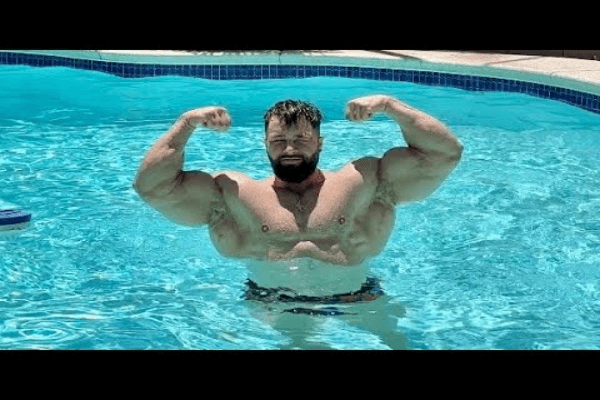
While the primary focus of swimming isn’t solely about muscle growth, it offers a plethora of holistic benefits that contribute to overall health and well-being. Here, we explore the advantages of swimming that extend beyond pure muscle development:
- Cardiovascular Endurance and Stamina Enhancement
Swimming serves as an exceptional cardiovascular workout, promoting improved heart health and endurance. The rhythmic movements and sustained efforts in the water engage the heart and lungs, enhancing their efficiency over time.
- Low-Impact Exercise for Joint Health
One of the standout advantages of swimming is its low-impact nature. Unlike high-impact exercises that can stress joints, swimming provides a gentle yet effective way to work out various muscle groups without subjecting the joints to excessive strain.
- Full-Body Workout
Swimming engages virtually all major muscle groups, from the arms and shoulders to the core, back, and legs. This comprehensive engagement ensures that the entire body benefits from the workout, contributing to balanced muscle tone and overall strength.
- Improved Flexibility
The fluid movements required in swimming naturally enhance flexibility. The stretching and extension of muscles during strokes promote joint mobility and overall flexibility, fostering better range of motion.
- Weight Management and Calorie Burn
Swimming is known to be an effective calorie-burning activity. The resistance of water requires consistent effort, leading to an increased calorie expenditure. Over time, this can aid in weight management and maintaining a healthy body composition.
- Stress Reduction and Mental Well-being
The calming and rhythmic nature of swimming provides an opportunity for relaxation and stress relief. The soothing effects of water, coupled with the physical activity, can significantly contribute to improved mental well-being.
- Enhanced Lung Capacity
Swimming encourages controlled and deep breathing, which can enhance lung capacity over time. Improved lung function supports overall respiratory health and endurance in various physical activities.
- Versatility and All-Age Inclusivity
Swimming is a versatile activity suitable for individuals of all ages and fitness levels. Whether you’re an experienced swimmer or a beginner, the water accommodates varying intensity levels, making it an inclusive option for everyone.
- Social Engagement and Fun
Swimming often provides a social and enjoyable environment, whether you’re swimming with friends, participating in group classes, or simply enjoying time in the water. This aspect adds an element of fun and camaraderie to your fitness routine.
In short words, while swimming may not be the primary avenue for extreme muscle growth, its benefits extend far beyond the physical realm. From cardiovascular health to joint-friendly exercise, flexibility, and mental well-being, swimming offers a comprehensive package of advantages that cater to the diverse needs of individuals seeking a well-rounded fitness regimen.
Frequently Asked Question
Can you build muscle just from swimming?
Yes, you can build muscle through swimming, but it might require a combination of other exercises and strength training to maximize muscle growth.
How much do you have to swim to build muscle?
The amount of swimming needed to build muscle varies based on factors like your fitness level, intensity, and consistency. Regular swimming combined with targeted strength training can contribute to muscle growth over time.
Does swimming build muscle faster?
Swimming can lead to muscle growth, but its rate compared to other forms of exercise depends on various factors like intensity, duration, and individual body response.
Can swimming replace gym?
Swimming offers a unique set of benefits, including full-body engagement and low-impact exercise, but it may not fully replace the overall benefits of a gym. Combining both swimming and gym workouts can provide a well-rounded fitness routine.
Is swimming better than weightlifting?
Both swimming and weightlifting offer distinct benefits. Swimming provides cardiovascular conditioning and engages various muscle groups, while weightlifting focuses on strength and muscle building. The choice depends on your fitness goals and preferences.
Should I swim first or gym first?
Whether to swim or go to the gym first depends on your goals and preferences. If you prioritize cardio and full-body engagement, swimming first might be beneficial. If muscle building is your focus, starting with gym exercises could be more suitable. Experiment and find the sequence that works best for you.
How many hours should I swim a day?
The ideal amount of time to swim per day varies based on your fitness level, goals, and overall routine. Generally, starting with around 30 minutes to an hour of swimming per day can be a good guideline. Gradually increase duration as your fitness improves, but listen to your body to prevent overexertion.
Is swimming the best way to get fit?
Swimming is an excellent way to achieve overall fitness. It offers a full-body workout, improves cardiovascular health, enhances muscle tone, and is gentle on joints. However, the “best” way to get fit depends on your personal preferences, goals, and any existing physical conditions. It’s important to choose activities that you enjoy and can sustain in the long term.
Does swimming build muscle or burn fat?
Swimming can both build muscle and burn fat. It engages various muscle groups, contributing to muscle development and toning.
Additionally, swimming is a calorie-burning activity that helps in reducing body fat. The combination of muscle building and calorie expenditure makes swimming an effective way to enhance body composition.
Is swimming good for muscle recovery?
Yes, swimming can be beneficial for muscle recovery. The water’s buoyancy reduces impact on joints while providing gentle resistance for muscles. Swimming in a relaxed manner can aid in promoting blood circulation, helping to alleviate soreness and promote recovery after intense workouts.
Swimming workout for muscle gain?
A swimming workout for muscle gain can be designed by incorporating both endurance and strength-focused sets. Here’s a basic outline:
- Warm-up: Start with 5-10 minutes of easy swimming to warm up your muscles and prepare your body for the workout.
- Endurance Sets: Begin with longer distance sets at a moderate pace to build cardiovascular endurance and engage multiple muscle groups.
- Example: 4 sets of 200 meters freestyle with 30 seconds rest between sets.
- Strength Sets: Transition to shorter, intense sets to target muscle growth and strength.
- Example: 6 sets of 50 meters using a different stroke (butterfly, breaststroke, or backstroke) at maximum effort, with 1 minute rest between sets.
- Pull Sets: Use a pull buoy between your legs to isolate upper body muscles.
- Example: 4 sets of 100 meters freestyle pull with a pull buoy, focusing on powerful arm strokes, with 20 seconds rest between sets.
- Cool-down: End your session with 5-10 minutes of easy swimming to gradually lower your heart rate and prevent muscle stiffness.
Remember to listen to your body, gradually increase intensity, and consult a fitness professional if you’re new to swimming or strength training. Tailor the workout to your fitness level and goals.
Does swimming build chest muscle?
Yes, swimming can help build chest muscles. Strokes like freestyle, butterfly, and breaststroke engage the chest muscles as you pull and push through the water. Incorporating these strokes into your swimming routine can contribute to chest muscle development over time.
What muscles does swimming not work?
While swimming is a comprehensive full-body workout, there are a few muscle groups that may not be as heavily engaged:
- Lower Back: While many swimming strokes engage the back muscles, the lower back might not receive as much direct focus compared to exercises like deadlifts in weightlifting.
- Biceps and Triceps: Swimming does engage the arm muscles, but biceps and triceps might not experience the same level of isolated work as in dedicated weightlifting exercises.
- Quadriceps: While kicks in swimming strokes work the legs, they might not engage the quadriceps as intensively as exercises like squats and lunges.
- Abdominals: Swimming activates the core, but specific core exercises like planks and sit-ups might target abdominal muscles more directly.
It’s important to note that while swimming might not work these muscle groups as exclusively as other exercises, it still offers a well-rounded workout that engages a majority of the body’s muscle groups. Combining swimming with other forms of exercise can provide a balanced approach to overall fitness.
Does swimming burn fat?
Yes, swimming can help burn fat. Swimming is a calorie-burning activity that engages multiple muscle groups, requiring energy and increasing metabolism. The resistance of water adds to the effort, leading to calorie expenditure and contributing to fat loss over time.
However, a balanced diet and consistent exercise routine are also important factors for effective fat loss.
Best swimming stroke to build muscle?
The butterfly stroke is often considered one of the best swimming strokes for building muscle. It engages multiple muscle groups, including the chest, shoulders, back, and core, due to its demanding and powerful motion.
However, it’s important to note that all swimming strokes can contribute to muscle building when performed with proper technique and intensity. Varying your strokes and incorporating strength training can also enhance overall muscle development.
Conclusion
In conclusion, the question of whether you can grow muscle by swimming unveils a dynamic interplay between aquatic exercise and muscle development. While swimming offers a unique and effective means of engaging multiple muscle groups, achieving substantial muscle growth solely through swimming might require a strategic approach.
Incorporating strength training, targeted workouts, and varied strokes can amplify the benefits of swimming, fostering muscle development over time. The water’s resistance, combined with the holistic engagement of the body, makes swimming a valuable addition to a well-rounded fitness regimen.
As you dive into the pool with a purposeful mindset, remember that with the right techniques and dedication, swimming can indeed contribute to achieving your muscle-building goals.

